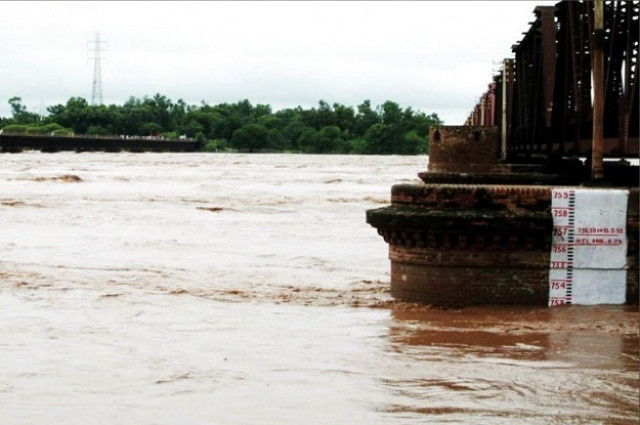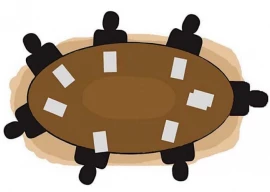
"No matter how much money is spent on strengthening and protecting a bund [dyke], it will still always be at the mercy of rats, a dark night and the careless patrol of a beldar [irrigation department official]," stated the bund manual, a comprehensive guide to monitor the behaviour of River Indus.
Animals, especially rats, burrowing through the embankments are a major cause of trouble for the irrigation department. "The temporary pipelines passing through earth bunds are likely to create trouble and should never be allowed," stated the manual, which suggests that road crossings should be fenced.
The bund manual also lays down the technical details needed to design a bund, its operation and maintenance. "This book wrapped in red cloth has started to decay. No one bothers to touch it," complains Idrees Rajput, a former irrigation secretary.
Breaches in dykes
The history of breaches in river dykes goes back to before Pakistan was created. According to official records, more than 200 breaches have occurred on the right and left side of River Indus since 1904 mainly because of leaks and water toppling over the bund.
The Tori bund, which developed a disastrous breach during the 2010 floods and submerged several villages, has actually been breached 28 times. Similarly, 39 breaches have occurred in the flood protected bund in Dadu and Larkana districts along with several cuts in MS Bund in Thatta, Qadirpur loop bund in Ghotki and Larkana and Sehwan dykes.
Breaching Tori
The first breach in Tori bund occurred in the year 1903-1904, said a senior irrigation officer, adding that the following one occurred in 1912 after it developed a leak. "After this, Sindh had witnessed a super flood in 1932, 1942 and 1973 respectively, which caused more destruction than the one in 2010," he said.
The officer admitted that the government has solely focused on ad-hoc arrangements instead of planning to resolve the issue permanently. "We have not learnt lessons from our past mistakes," he said. "I think the implementation of the bund manual, which was first published in 1936, can only get rid of this situation," he said.
When the Tori breach occurred in 2010, the executive engineer was fast asleep at the Irrigation Rest House located four kilometres away from the site, claimed residents. The bund manual makes it mandatory for all officials, right from the beldar to the sub-divisional officer to watch the bund area within their jurisdiction. "They are directed to remain punctual without leaving a substitute so that at no time the bund remains without a watch," stated the manual, adding that the overseeing officials should set up temporary headquarters at the centre of the active bund line as they will be responsible if any untoward incident takes place.
Provincial minister Mir Hazar Khan Bijarani, who belongs to the district, was satisfied with the development work and said the officials are now alert establishing camps at the embankments. "I agree that the instructions of the bund manual are not being properly followed," he said. "But looking at the three-year-long efforts on part of the Sindh government, we are confident that even super floods can pass without any damage. This can be our success story."
Published in The Express Tribune, July 26th, 2015.

















COMMENTS
Comments are moderated and generally will be posted if they are on-topic and not abusive.
For more information, please see our Comments FAQ